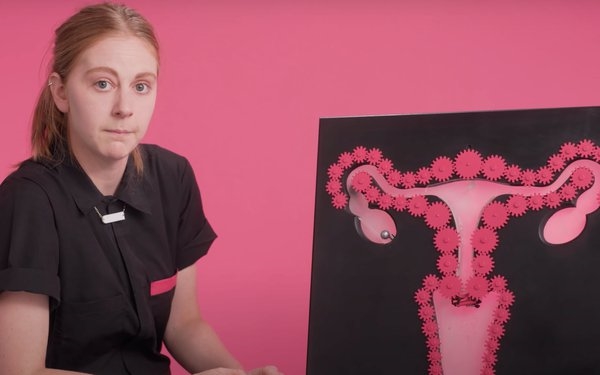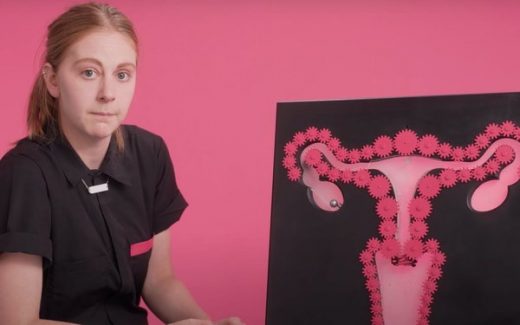Disrupting A Once-Staid Category, Kotex Builds A ‘Menstruation Machine’
Disrupting A Once-Staid Category, Kotex Builds A ‘Menstruation Machine’

There may be dozens of disruptive new brands reinventing the menstrual products, but hats off to 100-year-old Kotex for a funny first. Working with a popular YouTube creator Simone Giertz, Google and Ogilvy Chicago, Kimberly-Clark has invented a genuine Menstruation Machine to dispel universal confusion about how monthly periods work.
“The goal is to demystify periods to help reduce stigma. And we wanted a fun way to show how little people know about the way menstruation works,” says Sarah Paulsen, senior global creative and design director for Kimberly-Clark’s adult and feminine care brands.
She says some of the insights from the science and R&D teams even astounded the feminine-care creative group. There are 800 million people having their period every day? That fertilization takes place in the Fallopian tubes, not the uterus? Or the average menstrual cramp exerts 2.3 pounds of pressure per square inch, enough to empty a tube of toothpaste or dent an empty soda can? Minds. Blown.
Paulsen says the approach came together, in large part, because of Giertz’s unique personality and delivery. (Among her STEM-can-be-funny videos, which have collected tens of millions of views: She’s turned her Tesla into a pickup truck, become weightless in her DIY astronaut training device, and built a coffee table out of 20,000 matches.)
She brings her quirky style of curiosity and explanation to the period project, right down to her homemade tampon necklace and ovary headband.
Paulsen says that while the launch is timed to Menstrual Hygiene Day May 28, “we have many ideas to keep this activation going across many different platforms. YouTube has been an amazing platform for us because it’s so popular with younger people who use it to search for content.”
The videos are the latest addition to Kotex’s “She Can Initiative,” a global effort aimed at promoting menstrual hygiene — which means, in part, “adequate sanitation facilities and access to feminine hygiene products,” according to Wikipedia. To further those goals, Kotex is also partnering with groups like Plan International and WASH United.
Once full of chaste print ads and weird euphemisms, the feminine care category has become a playground for young creators looking to shatter taboos. Product innovations range from disposable period underwear to reusable tampons. And cause-related efforts, from ending period poverty to banning the tampon tax, are part of young women’s daily social-media swirl.
Paulsen says that awareness meant Kotex had to look for something engaging and sharable, as well as educational. “We wanted to drive menstrual-hygiene awareness and make it more entertaining to watch,” she tells Marketing Daily. “So we fed Simone a lot of the science nuggets, and she 100% took it from there, building the machines herself. We’d never seen anything like this before.”
While Paulsen expects young women to be the prime audience, she points out that the brand is increasingly trying to bring young men into conversations about periods, too. A new brand video launched in Brazil, for example, shows a young boy passing a Kotex back to the girl sitting behind him in class.
Paulsen concedes that it’s challenging to try and keep up with the disruptors. “We’re experimenting with many of these new products too, and for us, it’s about continually testing and learning. We recently launched reusables in Australia, for example. And yes, there are a lot of efforts in this space — but it’s a huge problem to solve.”
(38)


